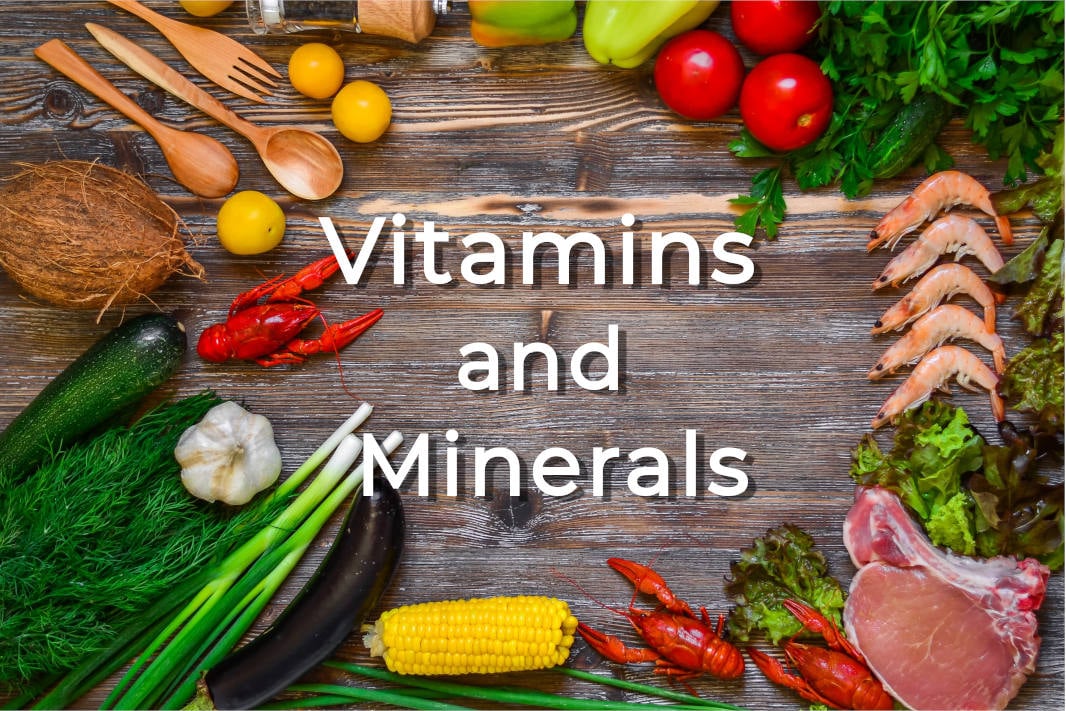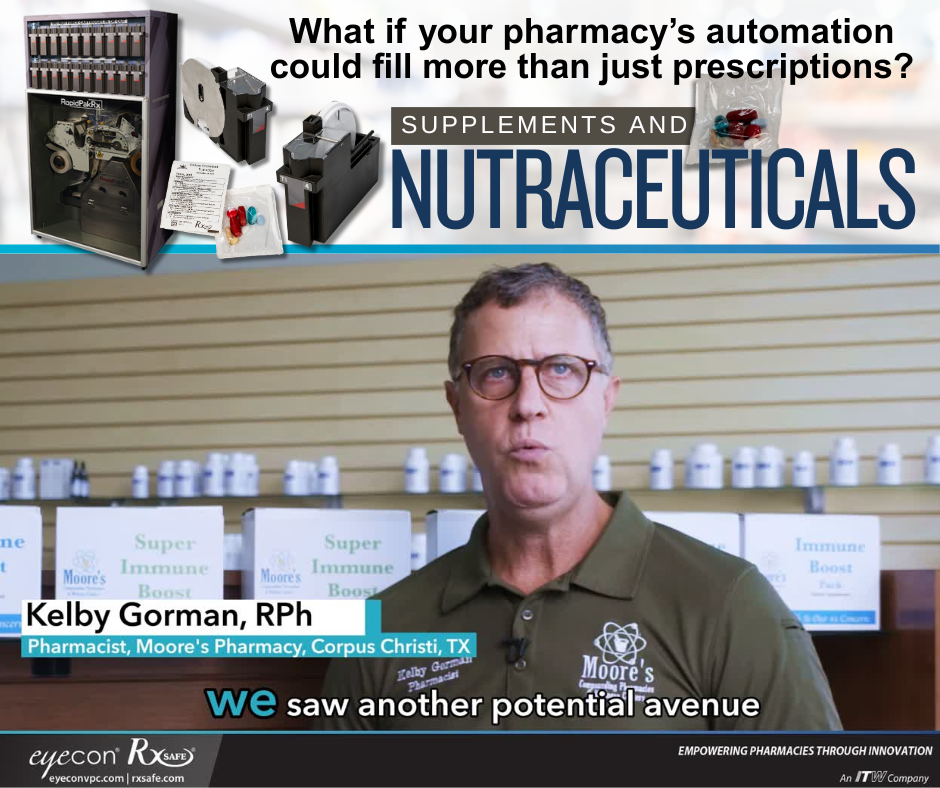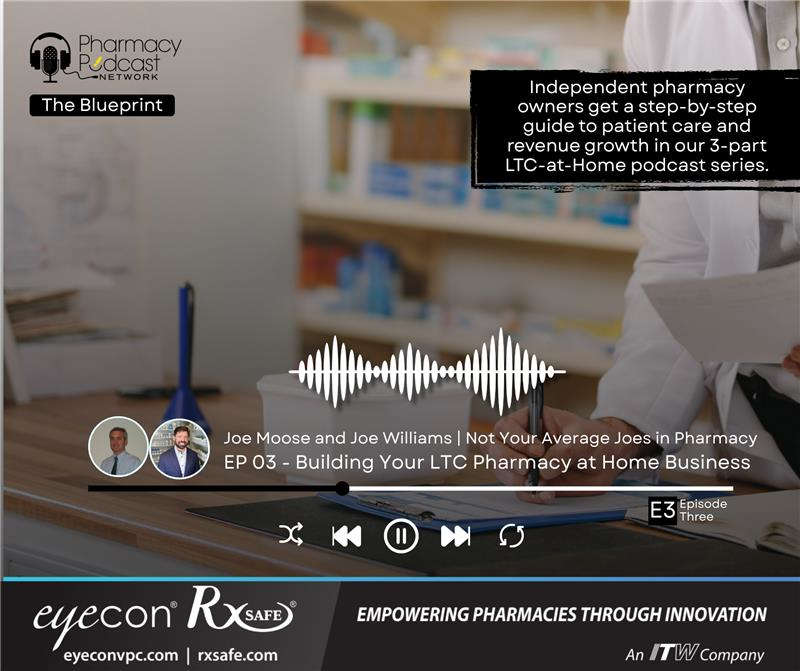Our last blog post looked at the most widely used supplements and prescription medications for treating the most common medical conditions. This time, we’ll examine some of the causes of vitamin and mineral deficiency and how independent pharmacies can help address it.
Despite a growing nutraceutical industry that is worth $330 billion, large segments of the US population are still at risk for nutrient deficiency in 2022.
The current state of nutrition in the US
The CDC’s Second Nutrition Report, which looks at levels of nutrition indicators in specific groups such as children, women of childbearing age, and minorities, showed that while 9 out of 10 (90%) Americans surveyed were doing enough to support their intake of vitamins and nutrients, the remaining 10% were deficient or at risk in four key areas. These areas included deficiencies in levels of folic acid (vitamin B9), iodine, vitamin D, and iron.
A study published by the National Institutes of Health found about one third or 31% of the US population (children and adults) was at risk for at least one vitamin deficiency (whether it be A, B6, B12, C, D, or E vitamins) or was at risk for anemia due to insufficient iron.

What is nutrient or vitamin deficiency?
As any pharmacist knows, micronutrients are essential to the body’s development and normal function. A micronutrient deficiency (a nutrient or vitamin deficiency) is any type of deficiency or lack of vitamins or minerals, where the body does not absorb enough vitamins such as vitamins A, K, D, C, or E or minerals such as selenium, zinc, copper, or iron.
Vitamin deficiencies can cause a range of conditions (including but not limited to) bone abnormalities, neurological problems, anemia, bleeding gums, and hair or skin changes.
Drug-induced vitamin depletion
Physicians, pharmacists, and patients are focused on adherence to improve health outcomes, but taking medicine may create another problem in the form of drug-induced nutrient depletion, which depletes vitamins and interferes with the body’s ability to absorb nutrients. This is a problem when managing chronic conditions that require taking ongoing prescriptions or OTC drugs.
A drug-nutrient interaction is any “physical, chemical, physiologic, or pathophysiologic relationship between a drug and a nutrient that can influence food intake, nutrient digestion, absorption, distribution, and metabolism.”
Here are a few examples of drug interactions:
- Antacids such as Prilosec, Zantac, or Nexium can cause deficiencies in vitamin B12, zinc, calcium, magnesium, and iron when used long-term.
- Statins deplete coQ10, vitamin D, iron, magnesium, calcium, and folic acid.
- Non-steroidal anti-inflammatory drugs (NSAIDs), such as aspirin, deplete vitamin C, folate, and iron
- Antihypertensives, such as calcium channel blockers, ACE inhibitors, and beta-blockers deplete calcium, magnesium, potassium, zinc, and sodium.
- Hypoglycemics, such as metformin, decrease vitamin B12.
Who is at risk for vitamin depletion and nutrient deficiency?
While the studies mentioned above reveal that generally, all are at risk for some type of deficiency, there are segments of the population who are more vulnerable to these risks. These segments include:
- Pregnant women or those of childbearing age - This group needs folic acid and iodine to ensure lower birth defects and normal brain development of their babies.
- Mexican-American children and non-Hispanic black American women - Both these groups are likely to be iron deficient.
- Athletes - Focus on weight loss and caloric intake often leads to calcium, iron, and other vitamin deficiencies.
- Teenagers, whose intake of salt far exceeds healthy limits, may be upping their risks for obesity and weight gain.
- Anyone over 50 - Older people are more at risk for vitamin D deficiency as synthesis decreases with age.
- Bariatric surgery patients - Patients who have undergone surgery are most at risk for water-soluble vitamin deficiencies due to absorption problems
- Vegans or vegetarians - This group may not get enough protein in their diet and are particularly at risk for Vitamin B12 deficiencies
- Most patients with chronic conditions - Those who regularly take prescription medication to manage chronic conditions are at risk for nutrient and vitamin deficiency due to vitamin depletion.
Malnutrition and vitamin deficiencies are normally associated with developing countries; in a nation such as the US with seeming overabundance and easy access to food, why are we still at risk?
Hidden hunger and the typical American adult diet
Nutritionists refer to a ‘hidden hunger’ when the food people eat does not meet nutritional requirements.
More than a third of the US population (37%) eats fast food on a given day, according to the CDC. Fast food is defined as any type of readily available, mass-produced food designed to be quickly prepared and consumed quickly. Fast food, whether it comes from chain restaurants or bought from the frozen food section in supermarkets, is normally filled with preservatives, is high in saturated fat, sugar, and salt, but is usually nutrient deficient. In other words, this type of food is calorie-rich, nutritionally lacking, and unhealthy.
Indulgence in fast food makes a large part of the population at risk for nutritional deficiency and prone to the diseases that come with the deficiencies.
What nutrients are lacking in the American diet?
With a large segment of the population eating processed and fast foods, these people are fulfilling their daily caloric needs but are not meeting their Estimated Average Requirement (EAR) or daily required intake of micronutrients.
Not including enough natural foods such as dairy, fiber, whole grains, fruits and vegetables can lead to micronutrient inadequacy, making people more susceptible to chronic illnesses including cancer, cardiovascular disease, diabetes, or eye disease.
Nutrients that may be lacking include:
- Iron - Iron deficiency is very common, especially among young women, children, and vegetarians. Not getting enough iron may lead to iron deficiency anemia.
- Iodine - A lack of iodine can cause goiter, an enlargement of the thyroid gland, which affects metabolism. Normally a problem for people living in mountainous regions and places prone to flooding where the soil produces iodine-deficient crops, pregnant women are particularly at risk.
- Vitamin D - Vitamin D deficiency is very common, with 31% of non-Hispanic black Americans at risk. A lack of vitamin D can lead to muscle weakness, bone loss, soft bones, and an increased risk of fractures.
- Vitamin B6 - People with kidney conditions or small intestine problems that hinder food absorption are at risk for B6 deficiency. This vitamin is important for brain development of unborn babies, infants, and toddlers. The body does not store B6, so eating healthy is crucial.
- Vitamin B12 - Vegetarians, vegans, and older adults are more at risk for vitamin B12 deficiency. The most common symptoms of a lack of B12 include blood disorders, impaired brain function, and elevated homocysteine (amino acid) levels.
- Vitamin C - Patients on dialysis, smokers, and alcoholics are at risk. A lack of vitamin C leads to gum disease, skin problems, and a compromised immune system.
- Calcium - Calcium deficiency is very common, especially in postmenopausal women and older adults. The main symptom of calcium deficiency is an increased risk of osteoporosis later in life.
- Vitamin A - Pregnant mothers, breastfeeding mothers, and children are at risk for vitamin A deficiency. A lack of vitamin A causes childhood blindness and night blindness.
- Magnesium - Magnesium deficiency is common in heavy alcohol consumers, breastfeeding mothers, and patients on certain medications such as proton pump inhibitors (for ulcer and stomach acid control) and calcineurin inhibitors (for autoimmune conditions). Magnesium is needed for the body’s muscle and nerve functions and keeps blood pressure and heart rate normal.
How supplement packs can help: Nutraceutical Education
Dietary supplements are recognized for their role in bolstering nutrition, given the inadequate intake of essential minerals and vitamins in populations at risk. While supplements are not intended to replace the nutrition derived from food, they can be taken by both children and adults to boost the intake of nutrients that are lacking in their daily diet.
Supplements can also be an important tool for providers, both physicians and pharmacists, to ensure that their patients are getting the required vitamins and minerals, especially in cases when managing chronic conditions through prescription medication causes vitamin depletion.
Independent pharmacists, being the most ubiquitous and easily accessible health care providers, can be an indispensable resource in keeping patients adherent and managing any drug interactions by offering nutrition counseling and drug supplementation programs.
By educating their patients on the importance of taking supplements for addressing primary nutritional needs and drug-induced nutrient depletion, pharmacies can help patients improve their health, while at the same time, open their businesses up to more avenues for growth.
To learn how this can be done in your pharmacy, read our blog on how to increase supplement sales with adherence packaging here.







.png)


